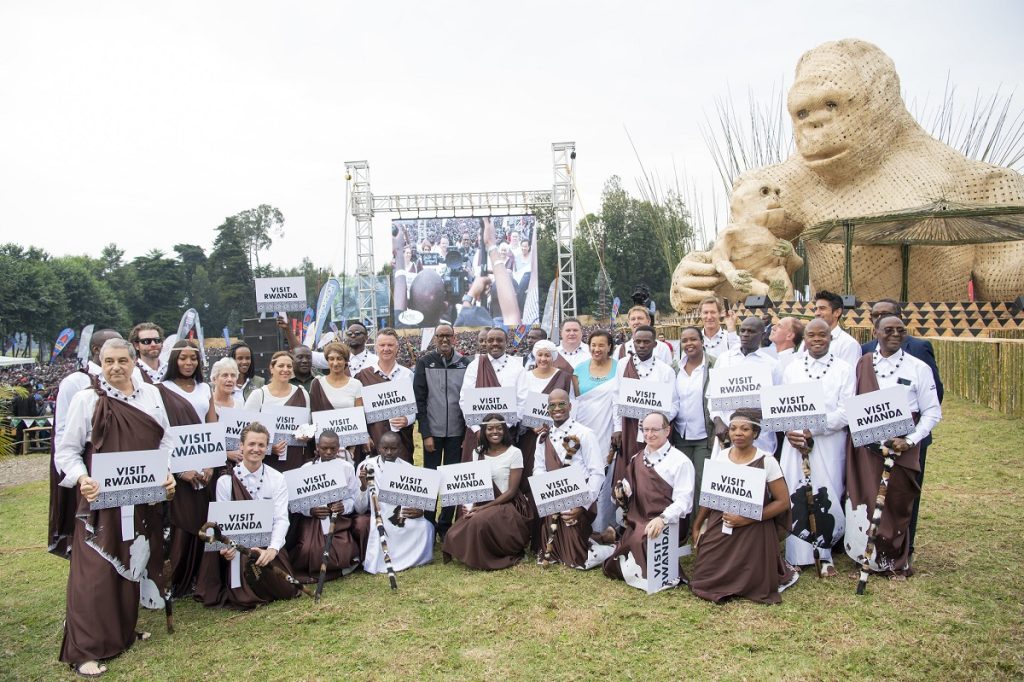Tens of thousands, including globally renowned icons, on Friday last week thronged Kinigi Sector, Musanze District to mark the 15th edition of the annual gorilla naming ceremony.
The ceremony that has won global acclaim under its brand name Kwita Izina, was officiated by President Paul Kagame, who is also the Chairman of RPF Inkotanyi.
In total, 25 baby gorillas were named during the event that is credited for raising global awareness on the conservation of the endangered species.
The Chairman commended Rwandans, especially the residents of Musanze and neighbouring districts for raising to the by actively participating in the conservation of the gorillas.
“I thank you all the citizens for preserving our environment. Even though it is clear that we all stand to win from conservation, there are times when people don’t realise the value of what they have. But for Musanze residents, I thank you enough,” he told thousands of local citizens who had gathered in the Northern Province.
President Kagame said he personally had an opportunity 15 years ago to name twin baby gorillas, whom he said he has been taking care of, and that “one of those children has become an important leader—a silverback.”
Since the President took the lead to name the gorillas during the first edition, there has been remarkable progress with the gorilla population increasing, tourist numbers to parks growing, and tourism thriving.
Statistics from Rwanda Development Board (RDB) show that the three national parks in Rwanda received 27,000 visits in 2004, but that number grew to 97,400 in 2018.
In the 2003 Census, there were 380 gorillas in the Virunga Massif, with 21 groups, 10 in Rwanda and 11 in Democratic Republic of Congo and Uganda.
By the 2016 Census, there were 604 gorillas in Virunga Massif, with 31 groups 20 in Rwanda and 11 in DRC and Uganda.
The Head of State said that such success stories could not have happened without the cooperation of the citizens, especially those surrounding the parks, their understanding and the support of the entire local communities.
That cooperation, Kagame highlighted that it has benefitted the citizens themselves through the revenue sharing programme, the tourists who visit the endangered species and the country at large.
Currently, 10 per cent of the revenues collected from gorilla conservation goes back to local communities.
According to the President, this has helped in advancing the cause of conservation, as well as development.
Rwanda Development indicates that as a result of the revenue share scheme, over Rwf5.2 billion has been disbursed to 647 community-based projects since the scheme was put in place.
Clare Akamanzi, the Chief Executive Officer of RDB, Kwita Izina today forms part of an ambitious strategy to preserve the natural heritage and expand the role of tourism in the country’s transformation.
“We have set the lofty target of increasing tourism revenue to 800 million dollars over the next five years – roughly double what it is today. Achieving the Vision, we have set for ourselves requires thinking big and even being bolder,” she said.
“That’s why Rwanda is investing heavily in a range of foundational drivers of conservation, tourism and community development from research and partnerships to training, promotion, quality assurance and infrastructure development,” she added.

